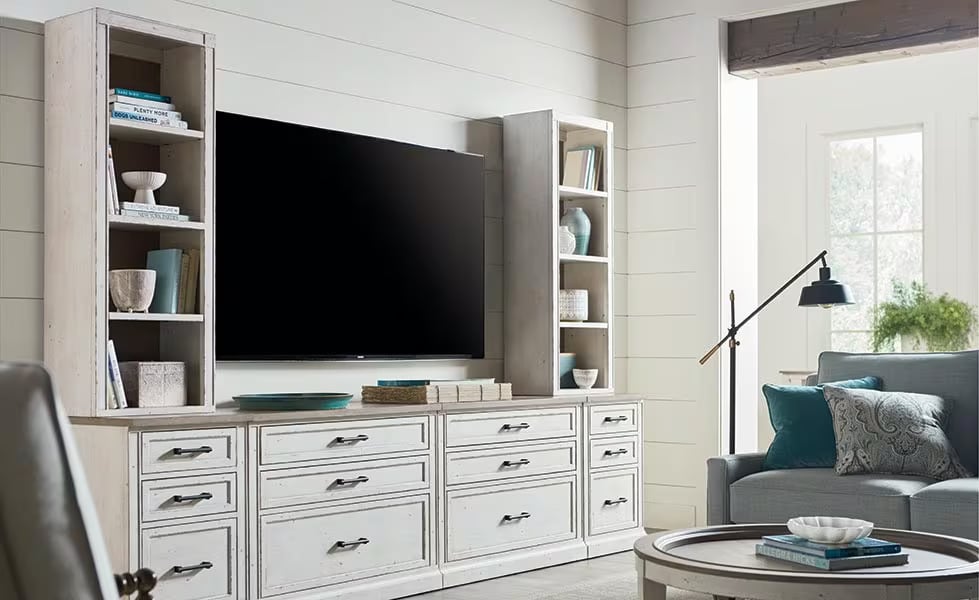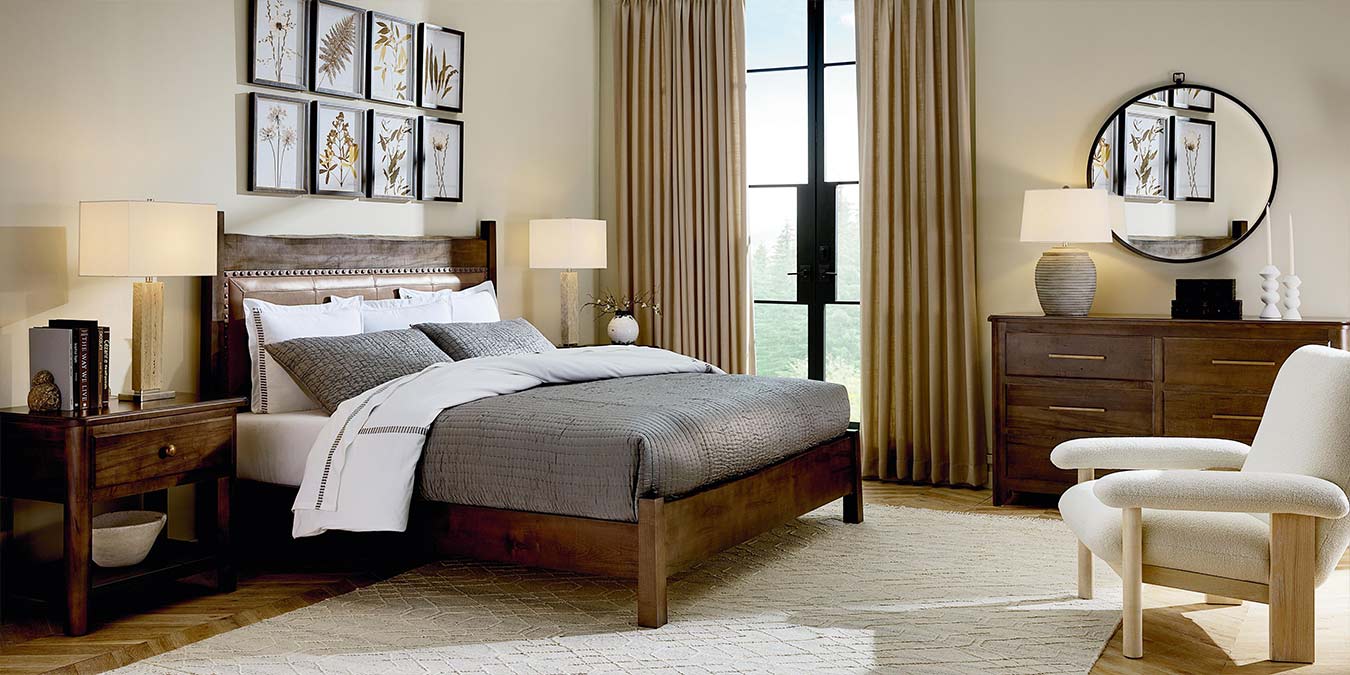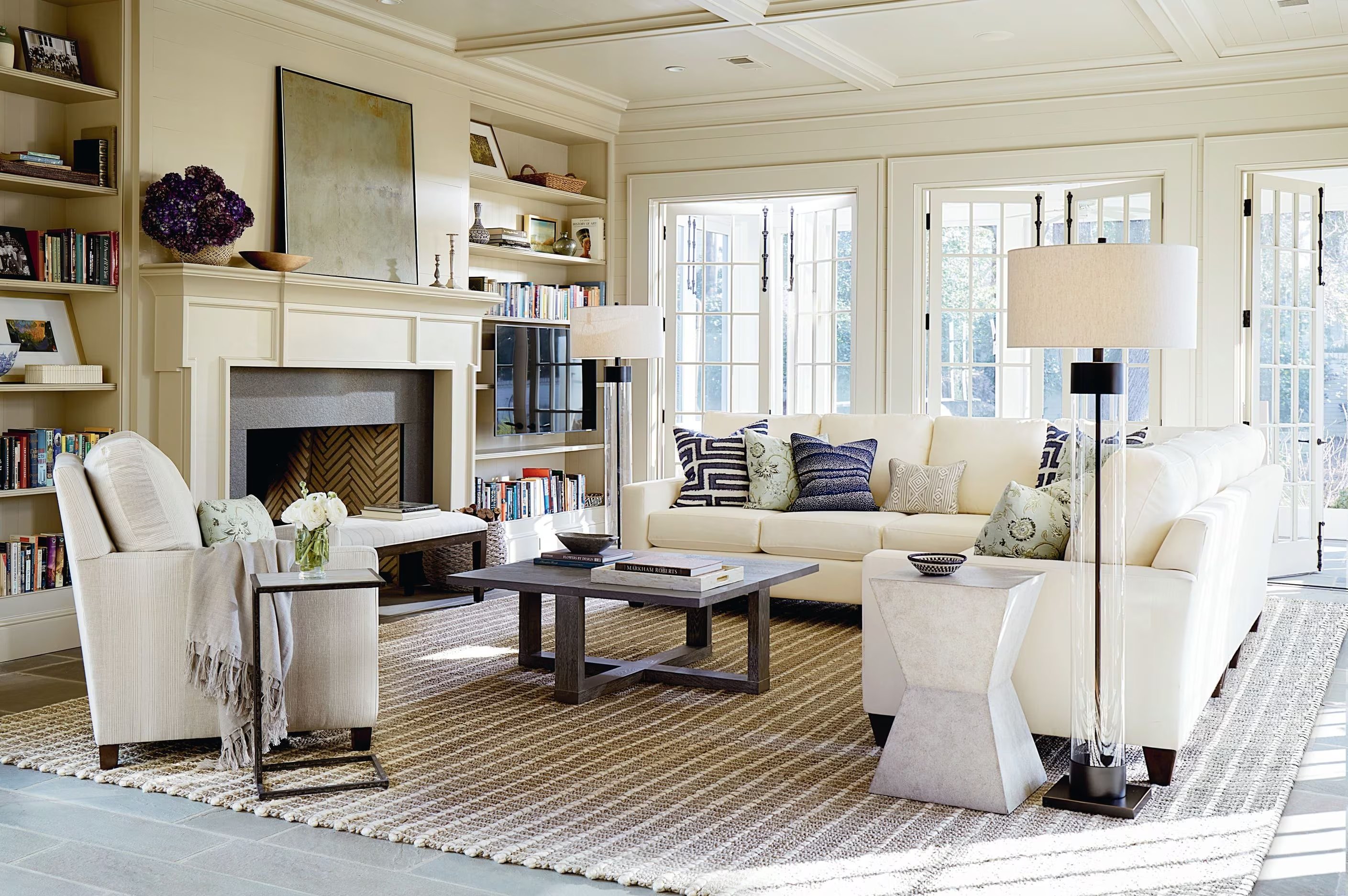How to Choose the Perfect Light Fixtures for Your Home
Updated 3/13/23
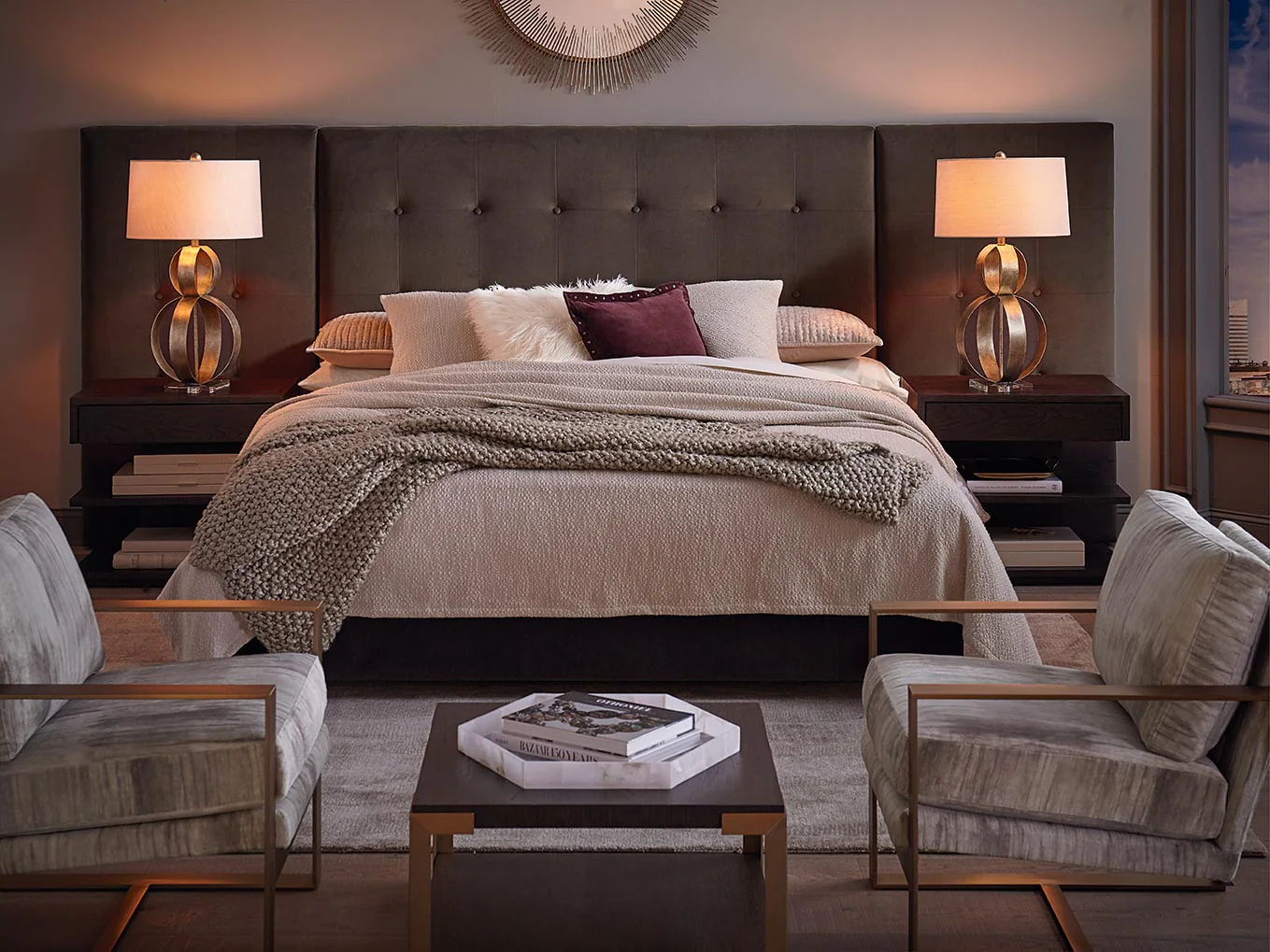
When choosing a lamp, it helps to factor in the design of the whole room, even if you are just thinking of a single table lamp, floor lamp, or pendant lamp. This article will help you choose room lighting for a home when you're designing your rooms. These few simple tricks will make choosing lights easy.
The Purpose of Lighting
Did you know that different lighting options serve different purposes in your home?
If you’re not lighting for the proper purposes in each space, you’ll find yourself with some dark and dingy corners… and not enough light to do what you want. You should plan for several lighting options within a space, including ambient, accent, overhead, path, and task/directional lighting. Let’s take a look at these different home lighting techniques and how they work together.
Ultimately, you’ll want to consider the lighting in three categories: low-level lighting, medium-height lighting, and overhead/pendant lighting.
• Low-level Lighting: tabletop lamps
• Medium-height lighting: floor lamps, wall sconces
• Overhead lighting: pendant lights, chandeliers, flush-mount ceiling lights
Pendant Lights to Set the Mood
Most rooms should have an overhead light, or pendant light, that serves as the focal point of the room. A chandelier adds a touch of elegance and sets the mood for both small and large spaces. Be sure to choose a chandelier or pendant light that matches your style and fills the space appropriately. For example, a crystal chandelier may look out of place in a rustic, lodge-type room. And a large pendant lamp (beautiful as it may be) can overpower a smaller room.
Some spaces may require more than one overhead light. For example, you’ll always need a low-hanging pendant light above your kitchen table. And you may also want coordinating pendant lights over your island or bar seating area. For larger rooms and entries, you may want to opt for two hanging or pendant lights to fill the space.
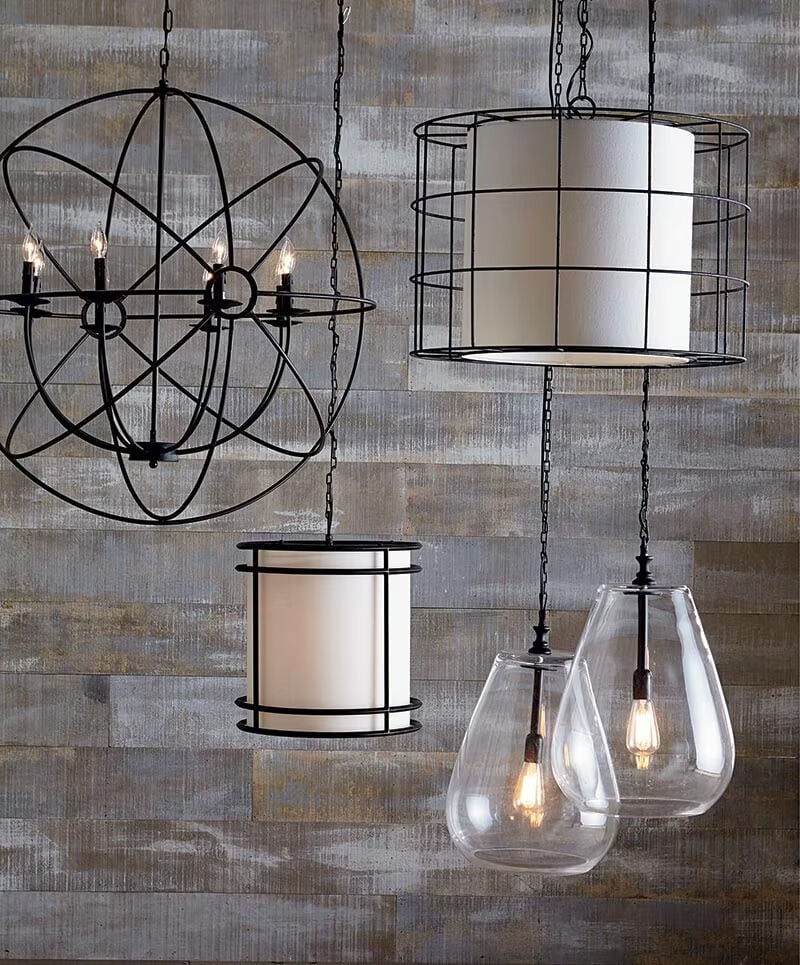
Your overhead lighting should be operable from a conveniently located light switch at the room’s entrance. You can choose lighting with exposed lightbulbs or overhead lights that include glass or fabric shades. Either way, select a light fixture that fits your style and allows you to build the rest of the room’s lighting to complement the focal piece.
Designer Tip: Maximize space on your living room end tables and bedroom nightstands by opting for a pendant light to hang above each table instead of using a table lamp.
Ambient Lighting Where You Need It
Once you decide on your overhead light fixture, it’s time to assess the rest of the space. Lighting can reflect off of the walls and ceilings to produce extra light by day and evening as well as soft shadows at night. So, depending on the natural lighting and existing overhead light in a room, you’ll want to supplement with other lighting sources.
Think about each room as a whole. Consider how you use each space as well as the length of time you typically spend there. Where do shadows fall? Are there any bright spots? Do you need to add warmth to a dark corner?
The best way to cover all of your lighting needs is to provide light at all different levels within each room: chandeliers and pendant light fixtures, floor lamps, task lamps, and table lamps. You may want to purchase lighting enclosed in glass to add brightness or a lamp with a lampshade for softer lighting. You’ll find countless styles, materials, shapes, and colors to choose from.
Task Lighting for All of Your Needs
Do you enjoy reading in bed or on the sofa? Do you play games with your family in the living room? Then you’ll want to include corner lights, tabletop lighting, or floor lamps to accommodate your needs.
A floor lamp will work best beside a chair or sofa where you are reading, knitting, or performing other tasks. A floor lamp can also provide extra mood lighting where you need it most. Some floor lamps are adjustable, so they can be raised or lowered according to your task.
The right table lamps can help you change the mood of a room in seconds. A table lamp or gooseneck lamp typically works best on a desktop or at the bedside to provide perfectly angled lighting every time. A task lamp can also work well on a desk or end table.
Path Lighting for Safety
When considering path lighting, most people think of outdoor needs. However, path lighting is also essential within the home. You’ll want to optimize your lighting in all of the high-traffic areas within your house to help prevent any potential falls or accidents. Consider a few well-placed wall sconces in a hallway, on both sides of a bathroom or hallway mirror, or even to highlight a special piece of art.
Be sure to install extra lighting in all of the following areas to keep your family and your guests safe.
- • Entryways
- • Foyers
- • Stairwells
- • Steps
- • Hallways
- • Room transitions
- • Basements
- • Closets
How to Choose a Lighting Style
Selecting the lighting for each room in your home involves more than just picking out what appeals to your tastes and preferences. You’ll also need to consider how you use the space, what kind of lighting the space will need at different times of day, as well as what mood you’ll want the room to convey. Let’s look at how to combine lighting in any space in your home.
The first thing you’ll want to do is determine your decorating style. You’ll find lighting available in styles to match any décor. You can even mix and match styles to your heart’s content.
- • Farmhouse
- • Rustic
- • Utilitarian
- • Vintage
- • Modern
- • Boho
- • Mid-century modern
- • Eclectic
- • And more!
Once you’ve determined your style, it’s time to select the lighting that will help each space in your home serve the function that you desire and create the mood you’ll want, too.
Combine Lighting in Any Space
Combining lighting in a room gives you the opportunity to add variety, contrasting height, and different points of interest throughout a space. Here are a few rules of thumb to consider.
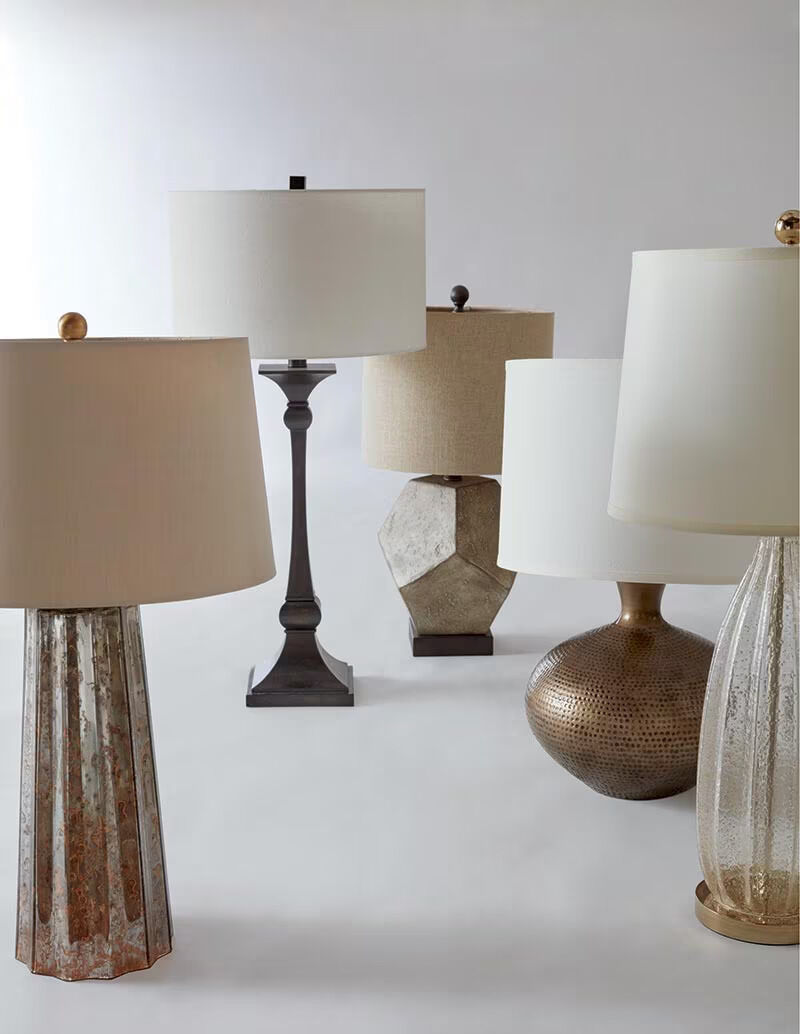
1. Create visual interest. Combine ceiling, wall, floor, and table lighting for a mix of visual interest and lighting at different levels throughout a space. You don’t have to use all four types of lighting; however, a mix of three is usually best.
2. Consider scale. Choose lights that complement the other lighting in the space without overwhelming a room. For overhead lighting, choose a focal point light that adds a little bit of wow factor without being overpowering.
3. It’s OK to mix and match colors and designs. Everything doesn’t have to match. In fact, most rooms look better when there’s a little something unexpected thrown in the mix.
4. Avoid glare. Choose tabletop lamps that don’t expose the lightbulb from a seated or standing position. You’ll want to read or move about freely in your room without a glaring lightbulb.
Hint: If you love the lamp, you may only need to change the shade for proper bulb coverage.
5. Let your lamp be a statement piece. An unexpected color, shape, material, or lampshade is all that is needed for your lamp to add character and flair to a room.
Lightbulbs Are Important Too
In addition to lighting styles, you may want to experiment with different bulbs (incandescent, fluorescent, full-spectrum, halogen, Edison bulbs, and LED lighting) in order to serve different purposes in your home and provide different levels of lighting.
You’ll also want to decide which spaces (dining room, living room, bedroom) to apply a dimmer switch so that you can choose the precise level of lighting you want for every occasion. Adding a dimmer switch makes it easy to control the brightness when you want. Each type of lightbulb can cast a different light in your room as well as change the color on your wall at different times of day and how any soft shadows appear.
The way you light a room can completely change the space. That’s why multiple lighting sources allow you to control the room’s ambiance and mood as well as how you use the space. Now, it’s time to start planning the lighting for your home! Shine on!
Need help selecting the proper lighting for your home? Shop online or book an appointment at your local Basset store for all of your lighting needs!
